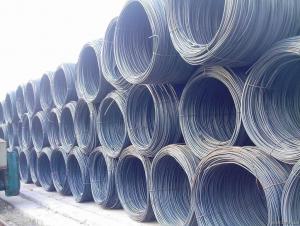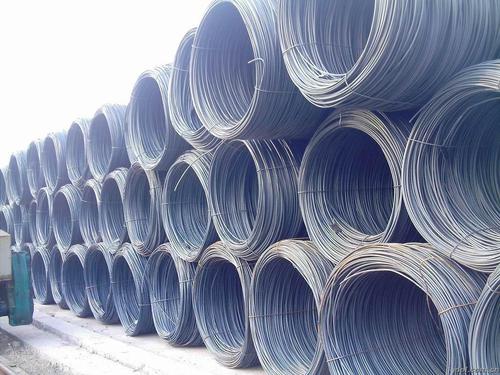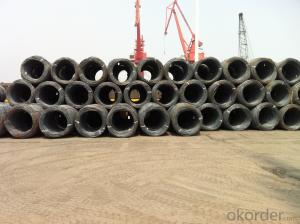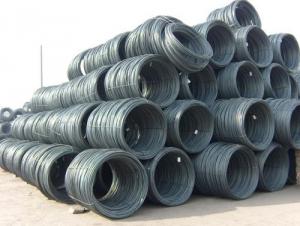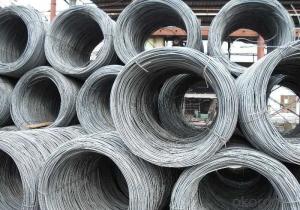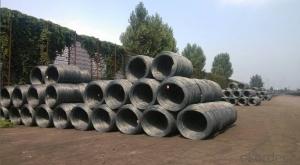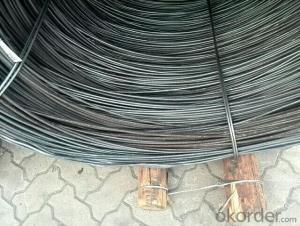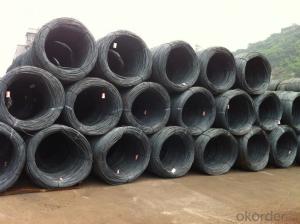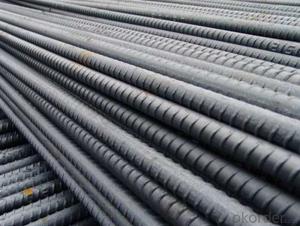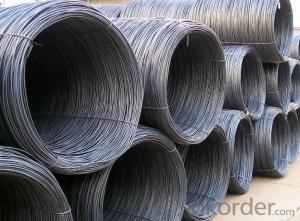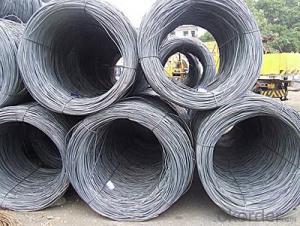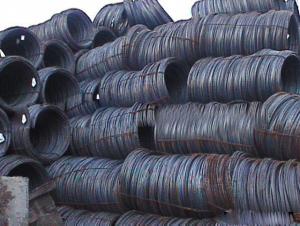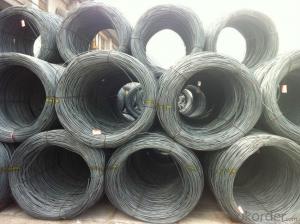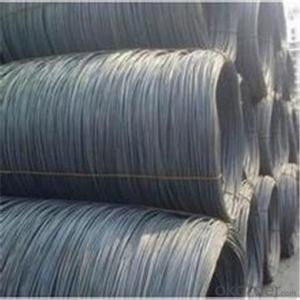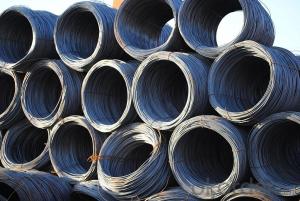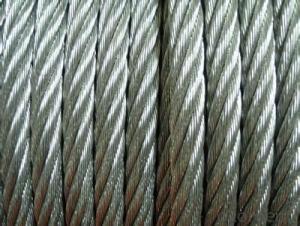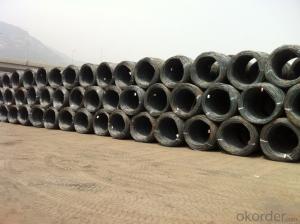Steel Wire Rod 6.5mm
- Loading Port:
- China Main Port
- Payment Terms:
- TT OR LC
- Min Order Qty:
- -
- Supply Capability:
- -
OKorder Service Pledge
OKorder Financial Service
You Might Also Like
Specifications of Steel Wire Rod in Coil:
Steel Grade: Q195/235, SAE1006-1018B Standard: ASTM, GB
Diameter: 6.5mm
Type: Drawn Wire Alloy or Not: Alloy Brand Name: HSKY
Technique: Hot Rolled Place of Origin: China Mainland
Chemical Composition:(Please kindly find our chemistry of our material based on SAE1006B and SAE1008B as below for your information)
Grade | Chemical Composition (%) | |||||
C | Mn | S | P | Si | B | |
SAE1006B | 0.03~O.07 | 0.32max | 0.045max | 0.040max | 0.30max | 0.0008min |
Mechanical properties | ||||||
Yield strength(N/mm2) | Tensile strength(N/mm2) | Elongation (%) | ||||
250-280 | 350-380 | ≥32 | ||||
Grade | Chemical Composition (%) | |||||
C | Mn | S | P | Si | B | |
SAE1008B | 0.10max | 0.3~0.50 | 0.050max | 0.040 max | 0.15max | 0.0008 min |
Mechanical properties | ||||||
Yield strength(N/mm2) | Tensile strength(N/mm2) | Elongation (%) | ||||
≥195 | 315-430 | ≥30 | ||||
- Q: How is steel wire rod different from other types of steel products?
- Steel wire rod is different from other types of steel products because it is a semi-finished product that is primarily used for further processing into various steel wire and steel wire products. Unlike other steel products, such as bars or sheets, steel wire rod is typically hot-rolled and has a round cross-section. Its specific composition and mechanical properties are tailored to meet the requirements of wire drawing, making it suitable for manufacturing a wide range of wire-based products, such as nails, wires, cables, springs, and reinforcement materials.
- Q: How is steel wire rod used in the manufacturing of wire forms for jewelry?
- Steel wire rod is an essential material used in the manufacturing of wire forms for jewelry. It is primarily utilized to create intricate and delicate wire shapes and structures that are commonly found in various types of jewelry, such as earrings, necklaces, bracelets, and rings. The steel wire rod is initially processed through a series of steps to transform it into a malleable and workable material. First, it is drawn through a die to reduce its diameter and achieve the desired thickness. This process, known as wire drawing, ensures that the steel wire rod becomes thin and pliable enough to be molded into intricate shapes. Once the wire rod has been drawn, it can be further manipulated and formed into various wire forms for jewelry. Skilled artisans use specialized tools, such as pliers, hammers, and mandrels, to bend, twist, and shape the wire into different designs. These wire forms can be as simple as loops or spirals, or they can be more complex and intricate, depending on the desired jewelry design. The steel wire rod's strength and durability make it an ideal material for creating wire forms that can withstand regular wear and tear. It provides the necessary support for gemstones, beads, and other decorative elements that may be added to the jewelry piece. Additionally, the steel wire rod's resistance to corrosion ensures that the wire forms remain intact and retain their shape over time. Furthermore, steel wire rod is often used as a base material for plating with precious metals such as gold or silver. The wire forms are coated with a thin layer of the desired metal, enhancing their aesthetic appeal and giving them a luxurious finish. This plating process adds value to the jewelry piece and makes it more visually appealing to customers. In summary, steel wire rod plays a crucial role in the manufacturing of wire forms for jewelry. Its malleability, strength, and resistance to corrosion make it an ideal material for creating intricate and durable wire shapes. Whether used as a base material or plated with precious metals, steel wire rod allows artisans to craft stunning and unique jewelry pieces that are both aesthetically pleasing and long-lasting.
- Q: What are the common industry standards for steel wire rod manufacturers?
- The common industry standards for steel wire rod manufacturers include adherence to internationally recognized quality management systems such as ISO 9001, compliance with national and international standards like ASTM, JIS, and EN, and meeting specific customer requirements regarding diameter, tensile strength, surface finish, and chemical composition. Additionally, manufacturers may also follow industry best practices for production processes, testing procedures, and packaging to ensure the consistent quality and performance of their steel wire rod products.
- Q: How is steel wire rod used in the manufacturing of springs for mattresses?
- Steel wire rod is used in the manufacturing of springs for mattresses as it serves as the primary material for creating the spring coils. The wire rod is formed into the desired shape and then coiled to create the individual springs. These springs are then interconnected and secured to a frame to form the mattress spring system, providing support and durability for a comfortable sleep surface.
- Q: How is steel wire rod manufactured?
- Steel wire rod is manufactured through a process called hot rolling, which involves passing a billet or a slab of steel through a series of rolling mills. These mills compress and shape the steel into a long, continuous rod with a specific diameter. The rod is then cooled and coiled, ready to be used in various applications such as construction, automotive, and manufacturing industries.
- Q: How are steel wire rods used in the production of fencing?
- Steel wire rods are used in the production of fencing as they serve as the primary material for creating the wire mesh that forms the structure of the fence. These rods are shaped and woven together to create a durable and secure fencing system that provides protection and containment.
- Q: What are the different types of steel wire rod surface cleaning chemicals?
- There are several different types of steel wire rod surface cleaning chemicals that are commonly used in industrial applications. These chemicals are specifically designed to remove dirt, rust, scale, and other contaminants from the surface of steel wire rods, ensuring they are clean and ready for further processing or use. Some of the most common types of steel wire rod surface cleaning chemicals include: 1. Acid-based cleaners: Acid-based cleaners, such as hydrochloric acid or sulfuric acid, are commonly used to remove rust and scale from the surface of steel wire rods. These cleaners work by dissolving the rust and scale, leaving behind a clean and smooth surface. 2. Alkaline cleaners: Alkaline cleaners, often made with sodium hydroxide or potassium hydroxide, are effective at removing grease, oil, and other organic contaminants from steel wire rods. These cleaners work by breaking down and emulsifying the oils and greases, allowing them to be easily rinsed away. 3. Solvent-based cleaners: Solvent-based cleaners, such as mineral spirits or acetone, are commonly used to remove stubborn stains or adhesive residues from steel wire rods. These cleaners work by dissolving the stains or residues, making it easier to wipe or rinse them away. 4. Pickling solutions: Pickling solutions, typically made with a combination of acid and surfactants, are used to remove oxides and other surface impurities from steel wire rods. These solutions work by chemically reacting with the impurities, allowing them to be easily removed. 5. Passivating agents: Passivating agents, such as nitric acid or citric acid, are used to remove surface contaminants and promote the formation of a protective oxide layer on the surface of steel wire rods. This oxide layer helps to prevent future corrosion and extends the lifespan of the steel. It is important to note that the choice of cleaning chemical will depend on the specific requirements and condition of the steel wire rods. Additionally, proper safety precautions and guidelines should be followed when handling and using these chemicals to ensure worker safety and prevent environmental damage.
- Q: How is steel wire rod formed into specific shapes?
- Steel wire rod is formed into specific shapes through a process called wire drawing. In this process, the rod is pulled through a series of dies, which gradually reduce its diameter and shape it into the desired form. The wire rod is first cleaned and coated with lubricant to ease the drawing process. As it is pulled through the dies, the rod is elongated and its cross-sectional area decreases, resulting in the desired shape. This process allows for the production of various shapes and sizes of steel wire, which can be used for a wide range of applications.
- Q: What are the common alloying elements in steel wire rod?
- Steel wire rod usually contains common alloying elements such as carbon, manganese, silicon, and occasionally trace amounts of sulfur and phosphorous. These alloying elements are incorporated into steel to enhance its mechanical properties and optimize its performance for specific applications. Carbon is the primary alloying element in steel, responsible for increasing its hardness and strength. Manganese improves the strength and toughness of steel, while silicon contributes to its strength and resistance against oxidation. Although sulfur and phosphorous are typically present in minimal quantities and considered impurities, they can positively impact the machinability and free-cutting properties of the steel. It is important to note that the specific alloying elements and their proportions may vary based on the desired properties and intended use of the steel wire rod.
- Q: What is the maximum allowable deviation in diameter for steel wire rod?
- The maximum allowable deviation in diameter for steel wire rod is determined by different industries and applications, according to their specific standards and specifications. However, generally, the maximum allowable deviation in diameter for steel wire rod is typically defined as either a percentage or a specific tolerance range. For instance, in the steel industry, the maximum allowable deviation in diameter for steel wire rod can vary from +/- 0.010 inches to +/- 0.020 inches, depending on the grade and intended use of the wire rod. This indicates that the wire rod's diameter can be slightly greater or smaller than its specified value within this tolerance range. It is important to emphasize that these tolerances can differ based on the particular requirements of the industry and the intended application of the steel wire rod. Therefore, it is crucial to refer to the industry or application's relevant standards, specifications, and guidelines to ascertain the maximum allowable deviation in diameter for steel wire rod in a specific context.
Send your message to us
Steel Wire Rod 6.5mm
- Loading Port:
- China Main Port
- Payment Terms:
- TT OR LC
- Min Order Qty:
- -
- Supply Capability:
- -
OKorder Service Pledge
OKorder Financial Service
Similar products
Hot products
Hot Searches
Related keywords
